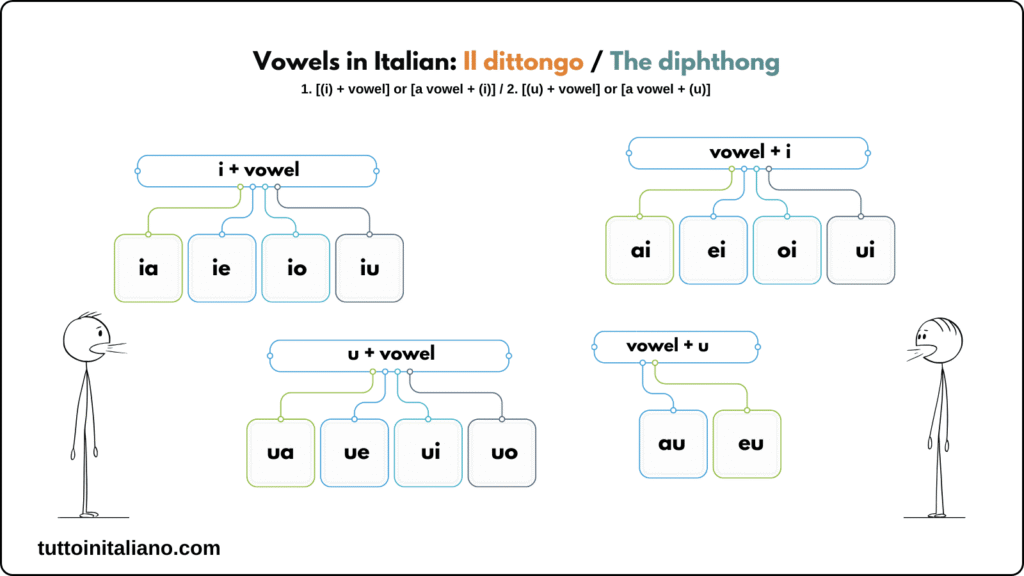When learning about the vowels in Italian it is important to know the difference between the diphthong and the triphthong how they are formed and what they mean.
A). Il dittongo / The diphthong
The diphthong is a set of two vowels made up of an unstressed (i) and a (u) and a vowel with or without an accent that forms a single syllable: piede (foot) / guida (guide).
Diphthongs can be formed from:
1. [(i) + vowel] or [a vowel + (i)]
| i + vowel | Example | vowel + i | Example |
| ia | Pianta (Plant) | ai | Daino (Fallow deer) |
| ie | ieri (Yesterday) | ei | Sei (Six) (You are) |
| io | Fiore (Flower) | oi | Poi (Then) |
| iu | Fiume (River) | ui | Lui (He) |

2. [(u) + vowel] or [a vowel + (u)]
| u + vowel | Example | vowel + u | Example |
| ua | Quale (Which) | au | Pausa (Break) |
| ue | Guerra (War) | eu | Europa (Europe) |
| ui | Guida (Guide) | ||
| uo | Uomo (Man) |
B). Il trittongo / The triphthong
The triphthong is a more complex vowel group (three vowels), composed of an (i) and a (u) (always unstressed) in union with other vowels, for example:
- guai (trouble)
- suoi (his)
- buoi (oxen)
- aiuola (flowerbed)
- maiuscolo (uppercase)
- vuoi (you want)
Exercise on the lesson here.